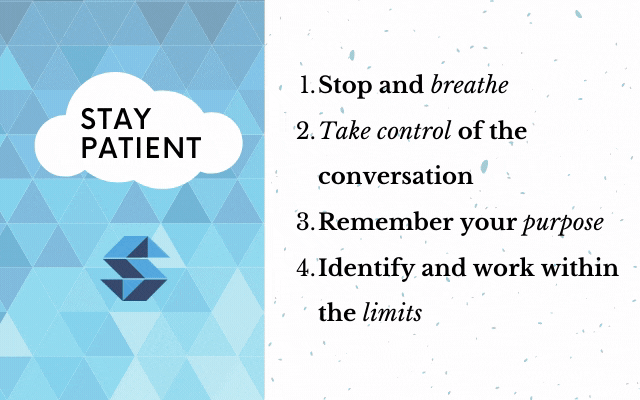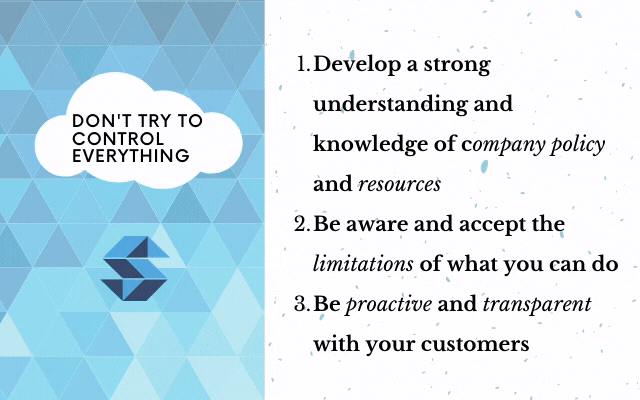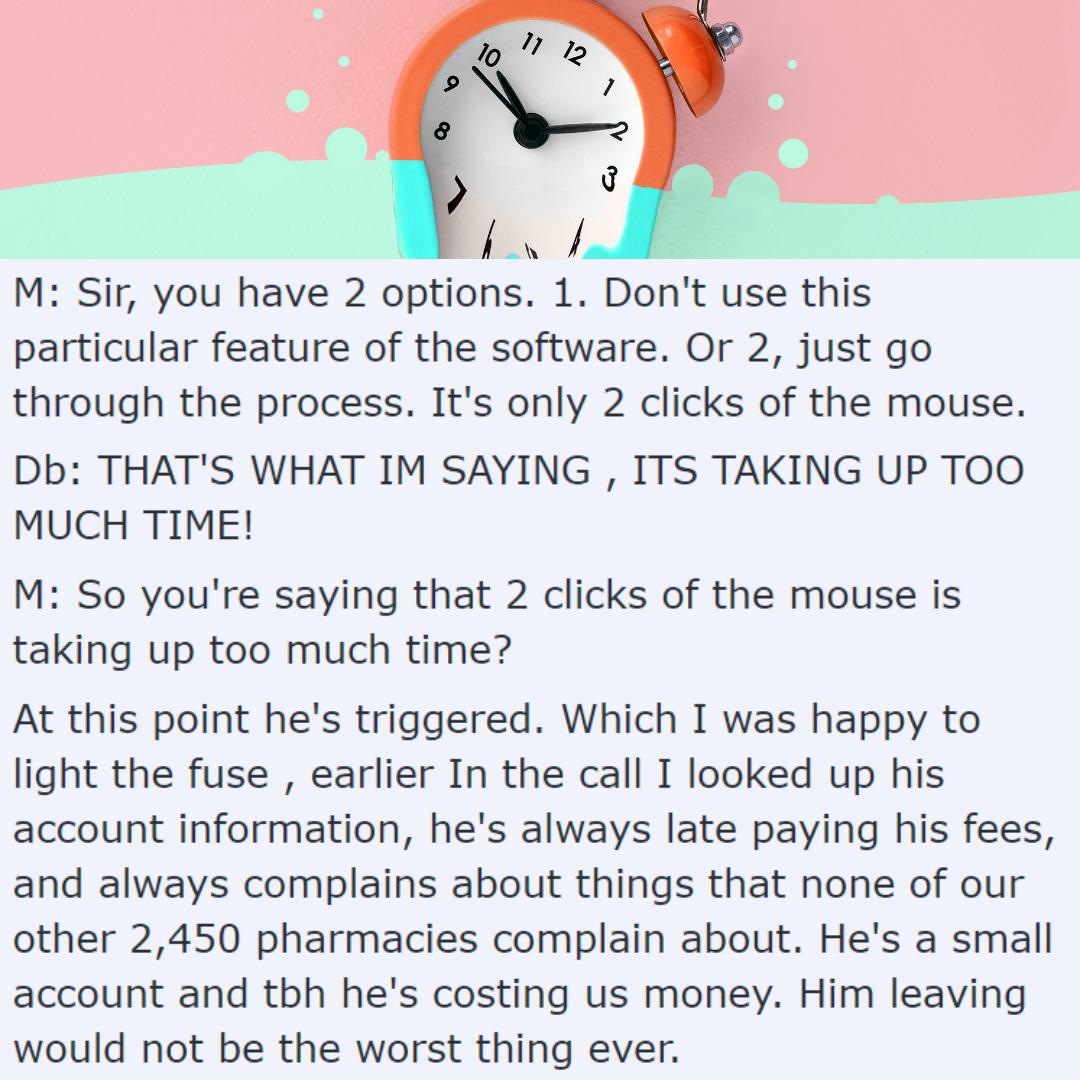There’s a common assumption that anybody can do customer service. There are certainly less barriers to working in the industry than most. Employers specifically look for qualities that are intrinsic rather than learned, such as patience and resourcefulness. But ‘low barriers’ does not equal zero threshold. Good customer service strategies often prioritize soft skills, such as the ability to communicate or a talent for intepreting what other people need. The reason why they do this is because pleasing people is a difficult job. Especially when they have to fix something—a product failure or a service gone wrong—to do it.
According to the people who have written about working anywhere in service industry, the life skills and wisdom that you get from serving people can greatly shape your life and career paths for the better. But the costs on your wellbeing can be equally taxing.
We spoke with Liz*, who has worked in the insurance industry as a customer service representative for 7 years. She says that it took a while to find the right temperament and balance of skills and expectations to finally feel like her job was fulfilling. Personally, she doesn’t believe that customer relations or customer service is for everyone.
“We all have different definitions of careers and passion. There’s no need to judge people for sticking in an industry,” she said.
And there is growth in customer service—especially if you’ve got the chops for it. Like in any industry, putting out a good performance can open doors for subjective promotion into more leadership and management roles. Here are five of the most important things to keep in mind if you want to thrive in customer service.

Practice patience—and no, it doesn’t mean letting the customer get away with wasting your time
It cannot be understated how important patience is. Giving your customers the time of day is a good way to build relationships with them. Listening intently to their problems and providing them relevant solutions is the ideal scenario. But it rarely plays out like that all the time.
You might find yourself in this situation from TalesfromCallCenters where an employee was trying to explain to a customer why she had to wait until the next day for a tow truck. Despite having to repeatedly explain the company’s reason, the customer had a difficult time understanding and accepting the situation. They ended up dragging out the conversation much longer than neccessary.

According to Sarah A. Schnitker, Ph.D., Associate Professor of Psychology and Neuroscience at Baylor University, “Patience is the ability to be calm in the face of adversity.” Although she says the ability to be patient in specific situations depends entirely on a person’s personality and experience, it’s possible to become better at it.
Firstly, breathe.
Don’t let the customer’s frustrations or your own force you to lose sight of the problem. Take a moment to remember where you are and to take a long and deep breath. This will help you think clearly and focus on what you need to do and what you can do. Go back to this first step every time you start to see the signs of a stressful situation creeping up on you.
Secondly, take control of the conversation.
Taking control doesn’t mean getting the other person to stop talking or accept everything that you say. Taking control means directing the conversation towards a more productive outcome. The key step in most strategies is asking the right questions. Ask questions that will
- state and clarify the purpose of the call
- identify and contextualize the customer’s problem
- convey the options and steps to solve the problem
You can try the following conversation markers:
- Let me break this down (restate the customer’s problem for clarification in a yes or no format). And you would like to (state the purpose of call)
- There are (state the number of steps or options you could take) ways that we can solve the issue.
Thirdly, don’t lose sight of your purpose.
A lot of things can add pressure to the job. Some companies lean very hard on reducing the average handling time of customer problems by its service representatives. A customer might become hostile and uncooperative. The problem at hand might require more resources or creativity than you’re allowed to take. Regardless, don’t let these things distract you from doing your job and finding the best possible solution for your customer.
Lastly, recognize the limits and work within them.
One important way to remain patient is to acknowledge the limits of your process. This can help you in two ways.

One, it will help you stay realistic and grounded. You know what you can and cannot do, and when to redirect the situation to the relevant person who can best address it.
Two, it can actually help you be more resourceful and creative. Keeping a clear eye on the limits towards your objectives may prompt you to think of solutions you never thought were possible. It’s still a good rule of thumb to run it by your team, of course.

Learn how to work with others – the sooner you do, the better for you and your customer.
Speaking of redirecting customers to the proper channels, needless to stay, it’s important to work well with other people in customer service. Whether you’re part of the customer service team in retail stores or in contact centers, it’s important to identify the people and the departments that are relevant to your process.
You might find yourself in a situation like this, where Reddit user /u/shelbydebee followed company policy to redirect a customer to a Specialty Agent from another department, only to be rebuffed by her own colleague. All while the customer was on the line!

If you’re thinking of working in customer service, keep in mind that the company culture is hugely influential when it comes to the esprit de corps of its employee. It shapes the interdependency of the departments, the workflow of each job function, and, of course, the smooth communication between employees. A company that has clear organizational lines will help you understand where the responsibilities lie and who you can rely on to get things done.
So, if you’re planning to join a contact center, do you research. Find out the company culture and highlight the ones that support their employees.

You probably already know this – you can’t control everything. Especially in customer service.
Plenty of things can go wrong between a business and a consumer. Some of these problems do not always fall within the ability of one customer service representative to resolve. We’re not here to make excuses. We’re here to point out that external factors do influence the shape of things. Carriers grounded by bad weather. Shipping delayed by unforeseen accidents. Partners suddenly set back by a pandemic, or the second economic recession in a generation. Go crazy.
It might sound corny to say, but it bears reflecting on the idea that we can only control the way we respond to the things that we can’t. The right response to your customer’s needs develops from a clear understanding of organizational policies, and a strong familiarity with the resources available to you.
But then, even if you do provide responsive solutions, there is no guarantee that your customers will always react as expected. You might be polite and jolly, but the person you are talking to is not. You might be feeling exhausted but the person you are talking to is demanding more of your time and energy. A situation can escalate despite all of the measures you take to appease the hurt.
And some problems require solutions that you simply do not have, and the ones you do may not measure up neither to yours or your customer’s expectations.

According to Shep Hyken, the best thing to do is be proactive with your customer. Be aware of the limitations and be resourceful. Knowing the different policies and departments, and the right people who can assist you, can go a long way in helping you manage the chaos.

Balance empathy and efficiency
Let’s talk about empathy first.
Customer service representatives are hired for their ability to see things through other people’s point of view, their pain and frustrations, their needs and worries. According to Helen Reiss, empathy is the first step to finding a compassionate solution to other people’s problems.
It is also this invaluable ability, however, that can deeply demoralize service workers in reverse. Some studies have shown that empathy can lead to problems for everyone in the long run because it leads to “empathy fatigue”. The old adage “The customer is always right“ reinforces erroneous assumptions about the benefits of prioritizing customer satisfaction over employee welfare.
Employees run the business. They know what the company is about. They’re part of its overall welfare. Letting customers take precedence over the well-being of the staff, especially when the customers are clearly in the wrong, is bad for the culture and the well-being of the employees. There are plenty of examples where customers have held employees emotionally hostage and drained company time and resources.

In addition, when customer service representatives are left to deal with angry customers who will not be appeased, with no training or recourse on how to step away for fear of losing the customer, it can be similarly damaging. This jeopardizes not just the long-term emotional health of customer service agents, but also their short-term goal of solving the problem at hand.

Now, let’s talk about efficiency.
Companies have a plethora of metrics to choose from when it comes to measuring customer satisfaction and the efficiency of their customer service. They can use one or a combination of Net Promotion Score, Customer Satisfaction Score, First Response Time, Overall Resolution Rate, Retention Rate, and so on. These are the industry standard peformance indicators to measure and ascertain quality in customer service.
On the other hand, much smaller companies and start-ups, focused largely on e-commerce strategies, put a high value on the one-to-one relationships they build with clients and customers. The start-ups we’ve spoken to believe in genuine engagement, from getting direct customer input on their products to engaging customers beyond transactional needs. For many of them, they believe that this is the approach that needs to shape the future of not just their customer service, but also their company culture.
Susan Buckwalter, CEO and co-founder of recoup, told us, “I think the companies that will thrive are the ones that recognize people’s humanity and celebrate that and appreciate that. And those are the type of cultures that will be more appealing moving forward.”
Overall, companies, both established and up-and-coming, have a lot to learn about how they can improve their customer service. Once again, empathy and efficiency are areas where company culture can be deeply influential and shape your experience as an employee.
Learn about the company you want to work for and be proactive about having the right resources and the enabling environment to do your job.
Customer service is not an easy job. But given the right tools, the right environment, and the right people to work with, it can be incredibly rewarding to be able to help solve problems and make people happy.


Pingback: Four Important Ways to Make Customer Service More Responsive - Staff Street